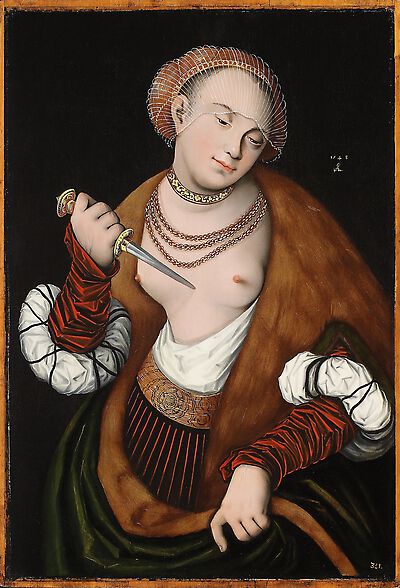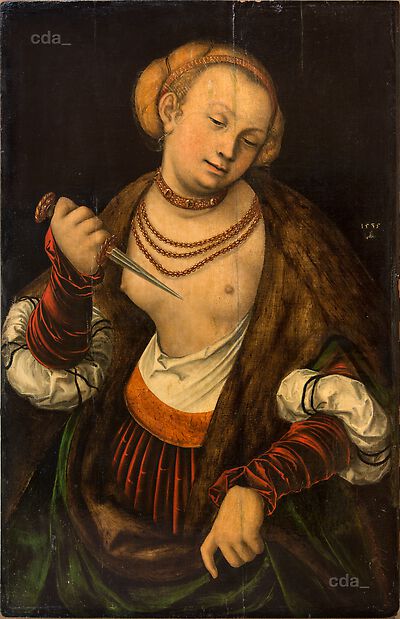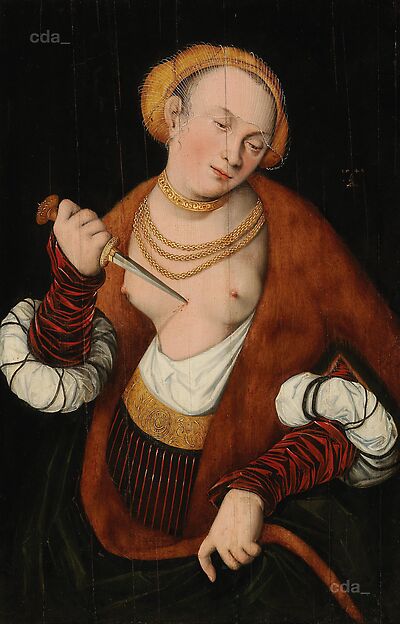- Attributions
-
Copy after Lucas Cranach the Elder
Lucas Cranach the Elder
Attributions
| Copy after Lucas Cranach the Elder | [handwritten annotation D. Koepplin to Van Ham on the copy of the Auction Catalogue Van Ham, auction No. 270, 21.11.2008, in the D. Koepplin Archive, 2008] |
| Lucas Cranach the Elder | [Exhib. Cat. Chemnitz 2005, 534] |
| Lucas Cranach the Elder , workshop | [copy of the Auction Catalogue Van Ham, auction No. 270, 21.11.2008, in the D. Koepplin Archive, 2008] |
| Forgery after Lucas Cranach the Elder | [written correspondence D. Koepplin and J. Herrschaft, 2011] |
- Production dates
- before 1722
1548
Production dates
| before 1722 | [Herrschaft, CDA 2010] |
| 1548 | [The date on the painting is probably not authentic] |
- Dimensions
- Dimensions of support: 77.3 x 53 cm
Dimensions
Dimensions of support: 77.3 x 53 cm
[copy of the Auction Catalogue Van Ham, auction No. 270, 21.11.2008, in the D. Koepplin Archive, 2008]
- Signature / Dating
Artist's insignia at the right edge: winged serpent (with elevated wings) and dated '1548'
Signature / Dating
Artist's insignia at the right edge: winged serpent (with elevated wings) and dated '1548'
[Exhib. Cat. Chemnitz 2005, 534]
[copy of the Auction Catalogue Van Ham, auction No. 270, 21.11.2008, in the Archive D. Koepplin, 2008]
- Inscriptions and Labels
in the bottom right corner: inscribed with an inventory number from the electoral collection: '351'
[copy of the …Inscriptions and Labels
Stamps, Seals, Labels:
in the bottom right corner: inscribed with an inventory number from the electoral collection: '351'
[copy of the Auction Catalogue Van Ham, auction No. 270, 21.11.2008, in the D. Koepplin Archive, 2008]
When the 1722 - 1728 inventory of the electoral collection (Kurfürstliche Sammlung) was dawn up the numbers were applied in oil to the bottom right corner of the paintings.
[Exhib. Cat. Chemnitz 2005, 137]
- Owner
- Private Collection
- Repository
- Private Collection
- CDA ID
- PRIVATE_NONE-P003
- FR (1978) Nr.
- FR-none
- Persistent Link
- https://lucascranach.org/en/PRIVATE_NONE-P003/


